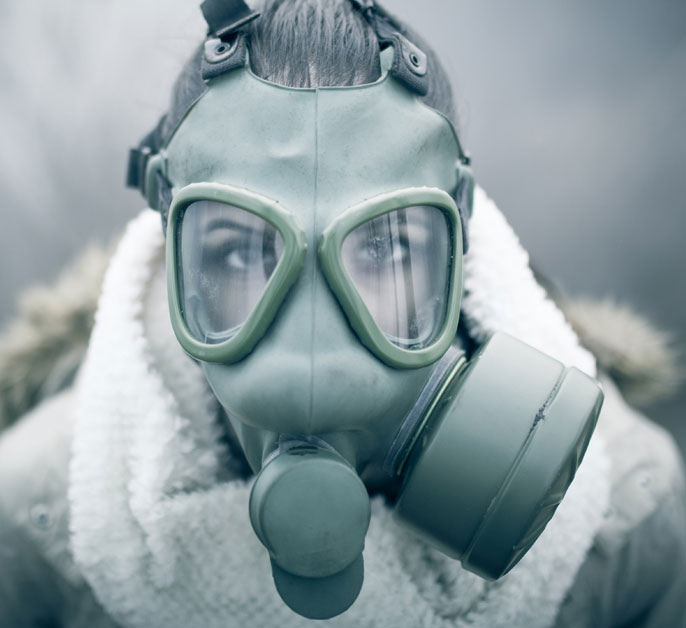
How is YOUR Indoor Air Quality?
At this time, many people are fearful of the outside air due to the coronavirus, not to mention pollen and other seasonal allergy irritants. We are spending more time indoors in an effort to be safe. What many people do not realize is that indoor air pollutants may be even worse!
Our indoor air can include viruses, pollen, molds, fungal spores, bacteria, smoke, gas combustion by-products, outgassing from carpets, furniture, plywood, and drywall, cleaning supplies and other personal care items, pet dander, dust mites and their feces and body fragments, cockroach body parts, and more. Disgusting!
So what do you do? Well, there are four principle ways to fight indoor air pollution and improve filtration in your home.
Source Control – The starting point for a home indoor air quality strategy is source control. It makes sense. If you can control a pollutant before it becomes airborne, you’re ahead of the game. Source control strategies include the use of low emission paints, varnishes, and carpeting, no smoking, no pets, maintaining optimum humidity levels, regular cleaning, and regular servicing of combustion appliances, such as furnaces. Unfortunately, you cannot always control pollutant sources.
Ventilation – After source control comes fresh air ventilation. According to the EPA, the air inside your home is far worse than outside air. Yet, when it’s really hot or really cold, who’s going to open the windows? It’s uncomfortable and unaffordable.
There is a solution for some homes that improves fresh ventilation without the comfort or energy costs. It’s called an energy recovery ventilator. Not only can it improve air quality, it can actually reduce utilities in certain circumstances.
Air Filters –Has your air quality remained the same, even after the installation of that expensive filter? All filters have a pressure drop, or amount of resistance. Even cheap throw-away filters can become problematic if not changed on a regular basis. As dirt collects on the filter, the pressure drop rises. Far worse than low cost throw-away filters are the high pressure drop filters. Homeowners buy expensive filters because they want to improve the air quality and comfort in their homes. Ironically, the filters often make things worse.
Look inside the panel of a furnace or blower for a central air conditioning system and you will find the manufacturer’s rating label. Typically, one of the ratings is ―Total ESP. Total ESP stands for Total External Static Pressure. When the Total External Static Pressure is exceeded in a home comfort system, the fan slows. When the fan slows, there are a couple of possible consequences. First, there may not be enough air flow to ensure sufficient air is delivered to the end of the longest duct runs. When this occurs, these rooms may feel stuffy and too hot or cold, even though the temperature is comfortable elsewhere. Second, the air flow passing over the evaporator coil may be insufficient to ensure proper dehumidification. If the evaporator coil doesn’t fully dehumidify, it and/or the surrounding plenum box can become a breeding ground for bacteriological growth and contaminants.
Fortunately, there are a number of excellent solutions for homeowners who want better filtration than the minimal amount found with a throw-away filter, but do not want the comfort or bacteriological problems of a high pressure drop filter. These include residential HEPA (high efficiency particulate arresting) filters, deep pleated media air filters, and air scrubber electronic air cleaners.
Air Cleaning – The fourth way to fight indoor air pollution is air cleaning. Do not buy the cheap tabletop and gadget air cleaners you hear advertised. They are a waste of money. According to an American Lung Association® report, ―The reviewed data provide little reason to endorse the use of inexpensive tabletop, appliance-type air cleaners, regardless of the technology they employ. In general, high-efficiency particle collection requires larger filters or electronic air cleaners.
We recommend a whole-house approach with a duct mounted UV light and either a HEPA filtration system or an electronic air cleaner. The installed cost of an electronic air cleaner is roughly 30 cents a day over the life of the air cleaner. What’s appropriate for your home depends on your budget, comfort system, and family.
Whether it’s installing a new ventilation system, filtration system, or air filter Polar Bear Heating & Air is happy to help with all of your comfort system needs.
Looking for heating repair, service, or install near you? Polar Bear Heating & Air has two convenient locations to bettter serve you.

Recent Comments